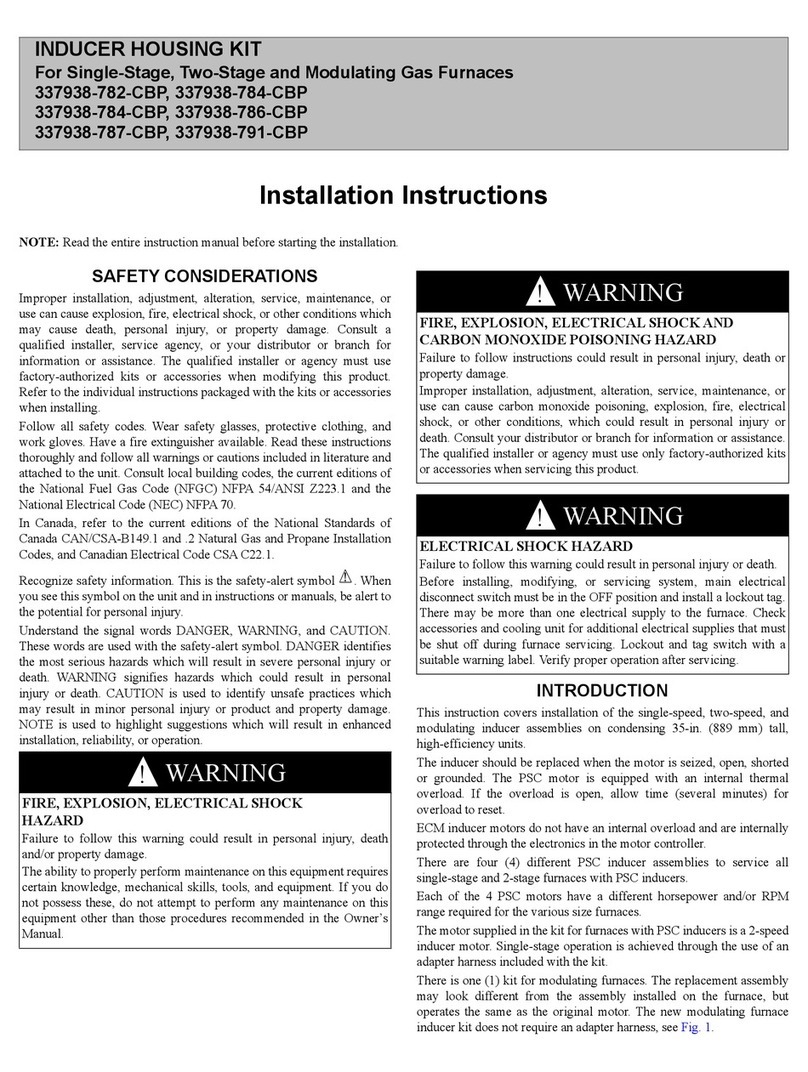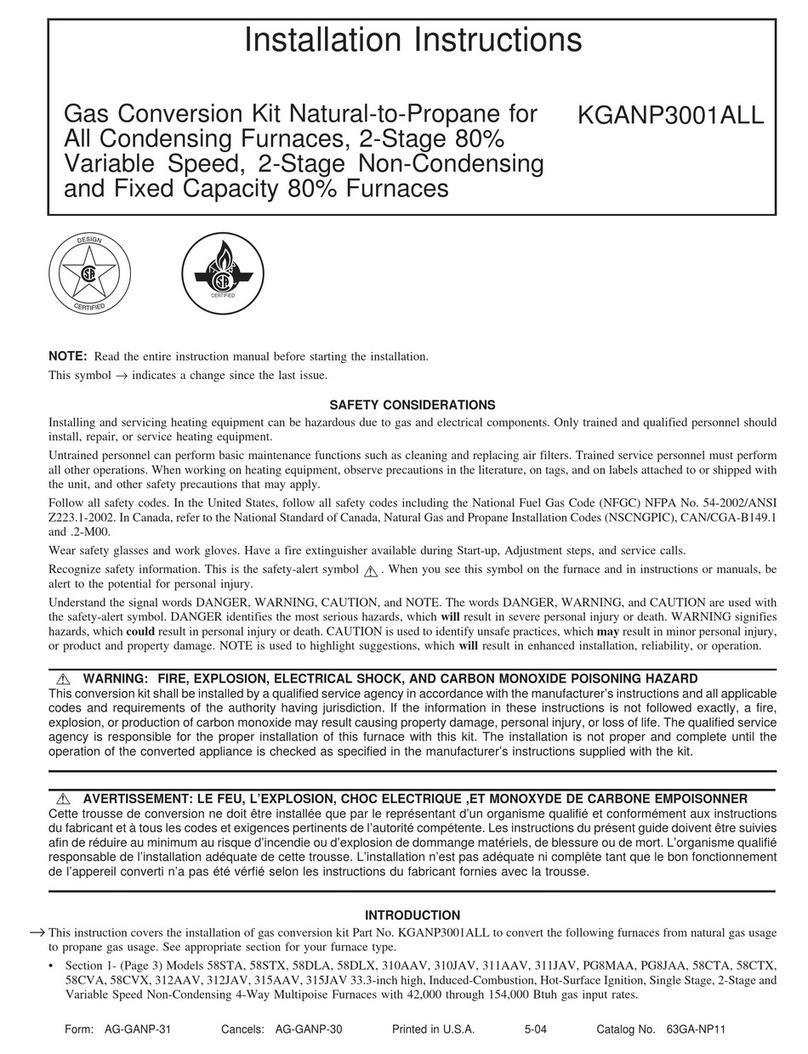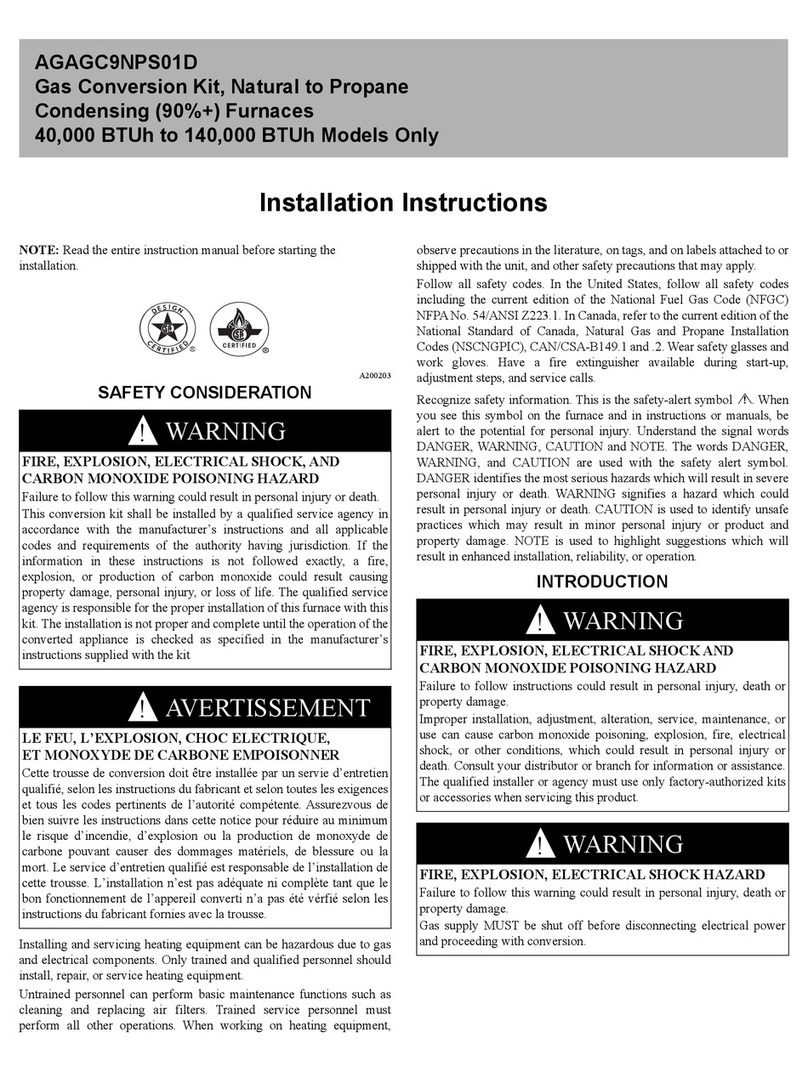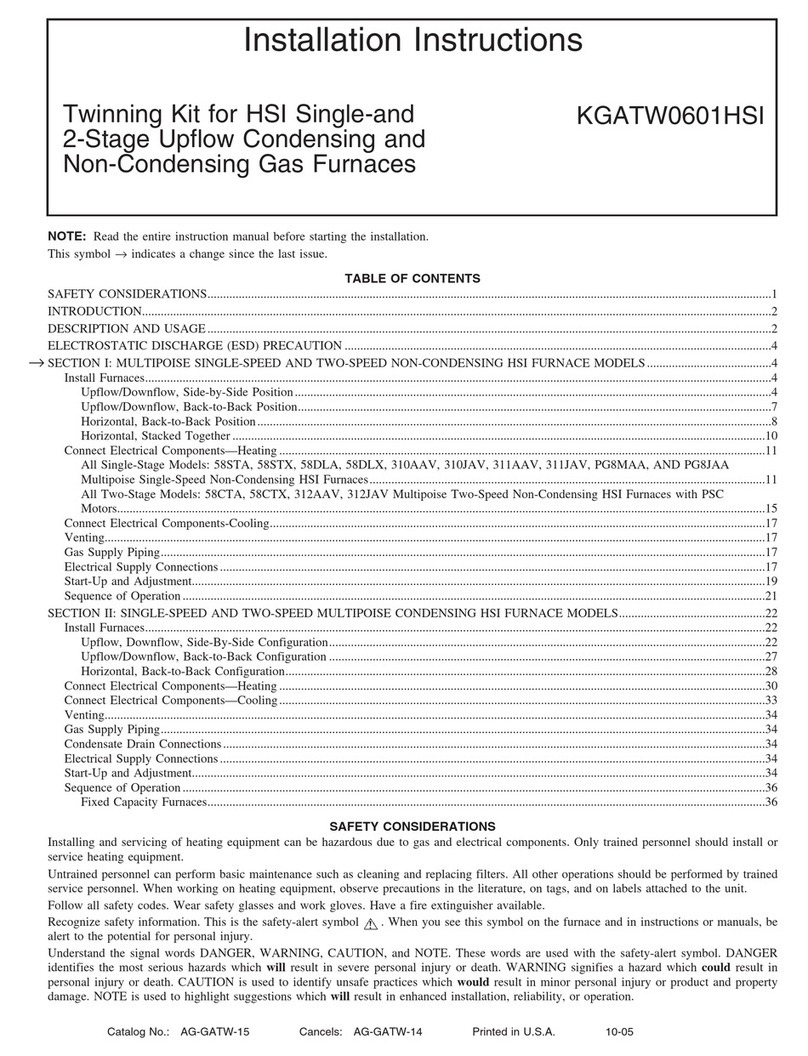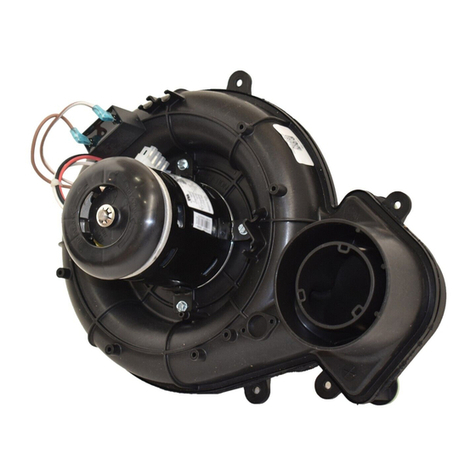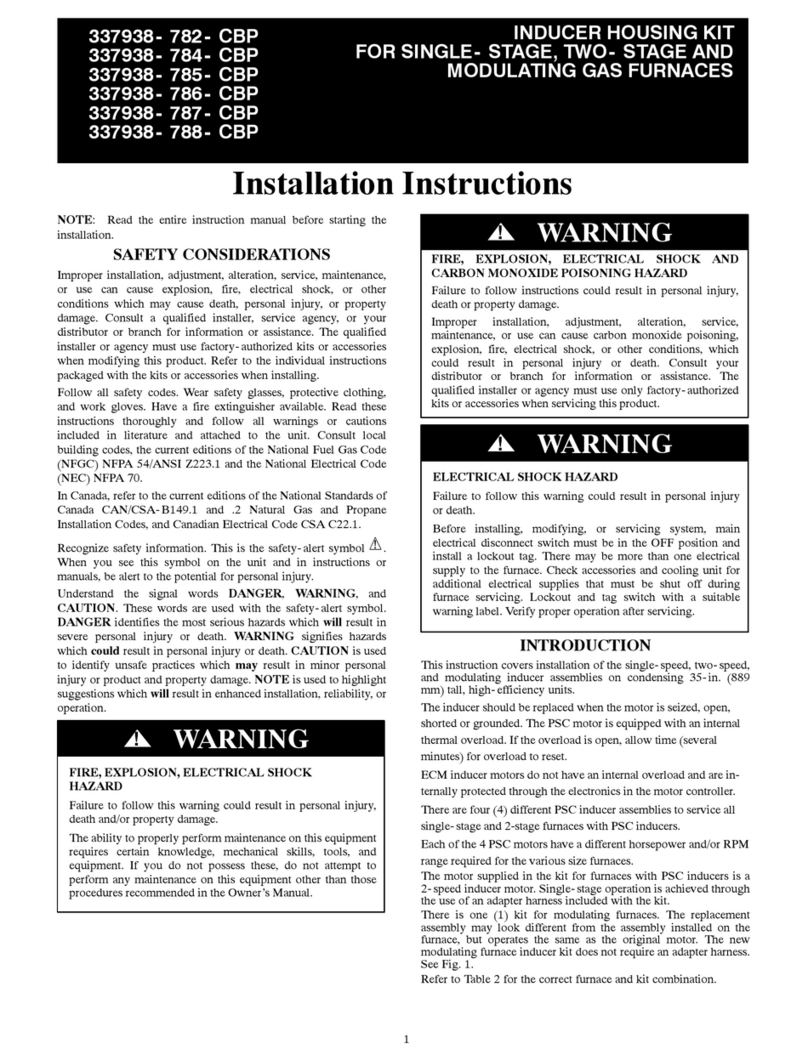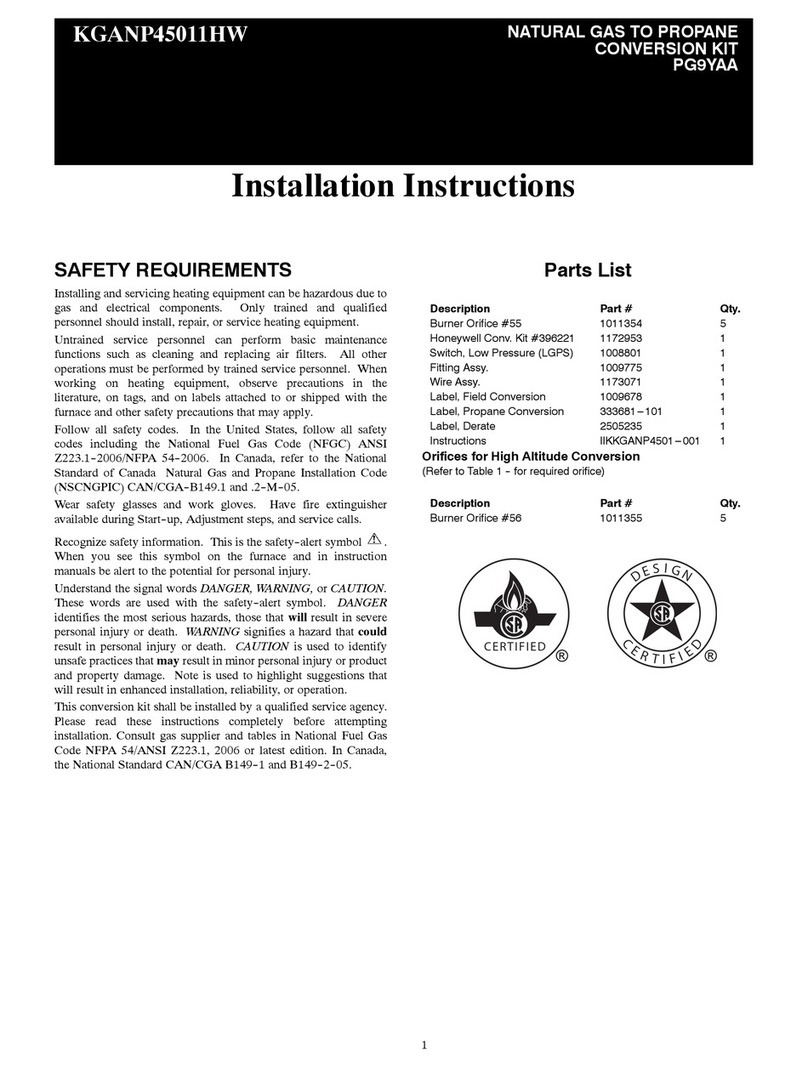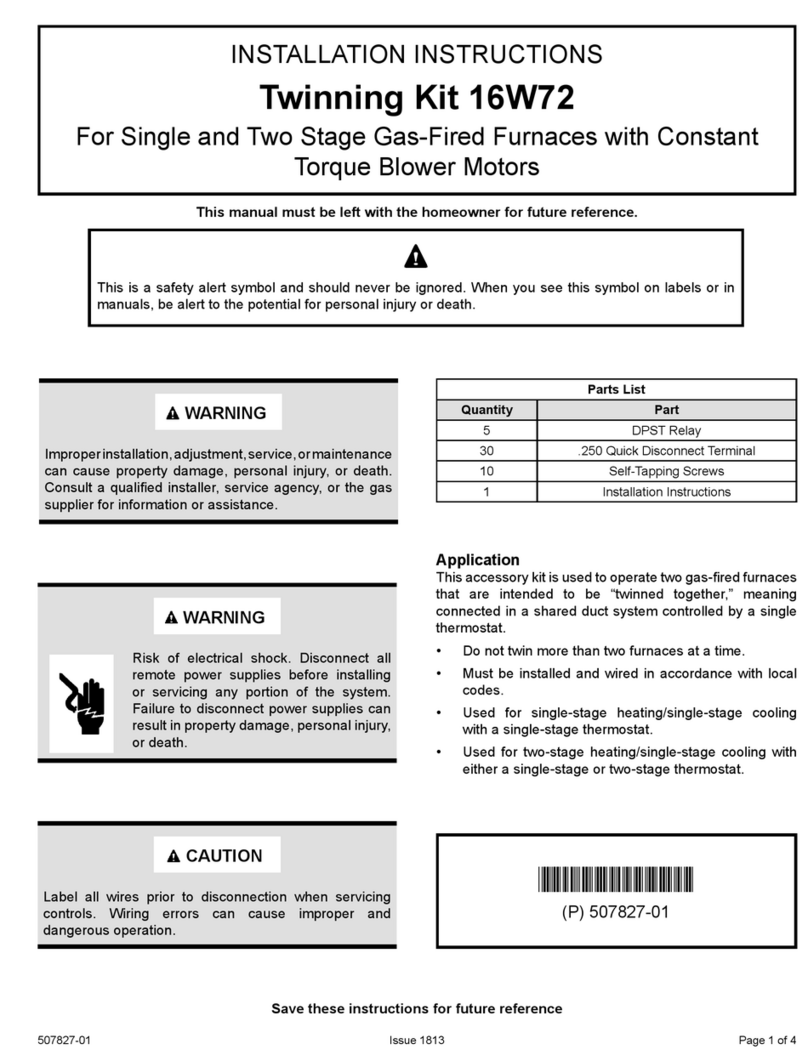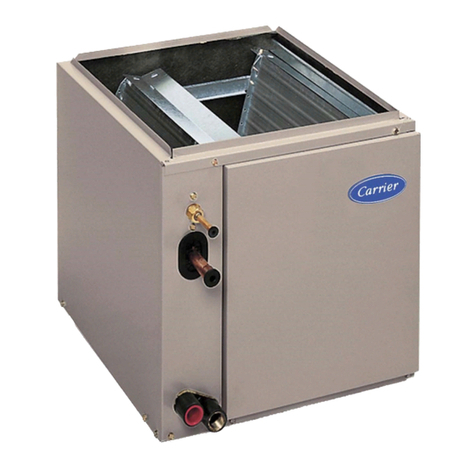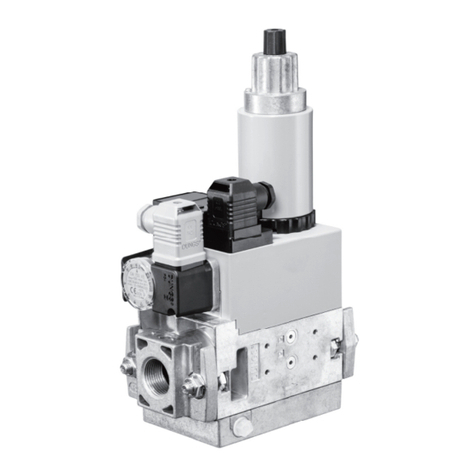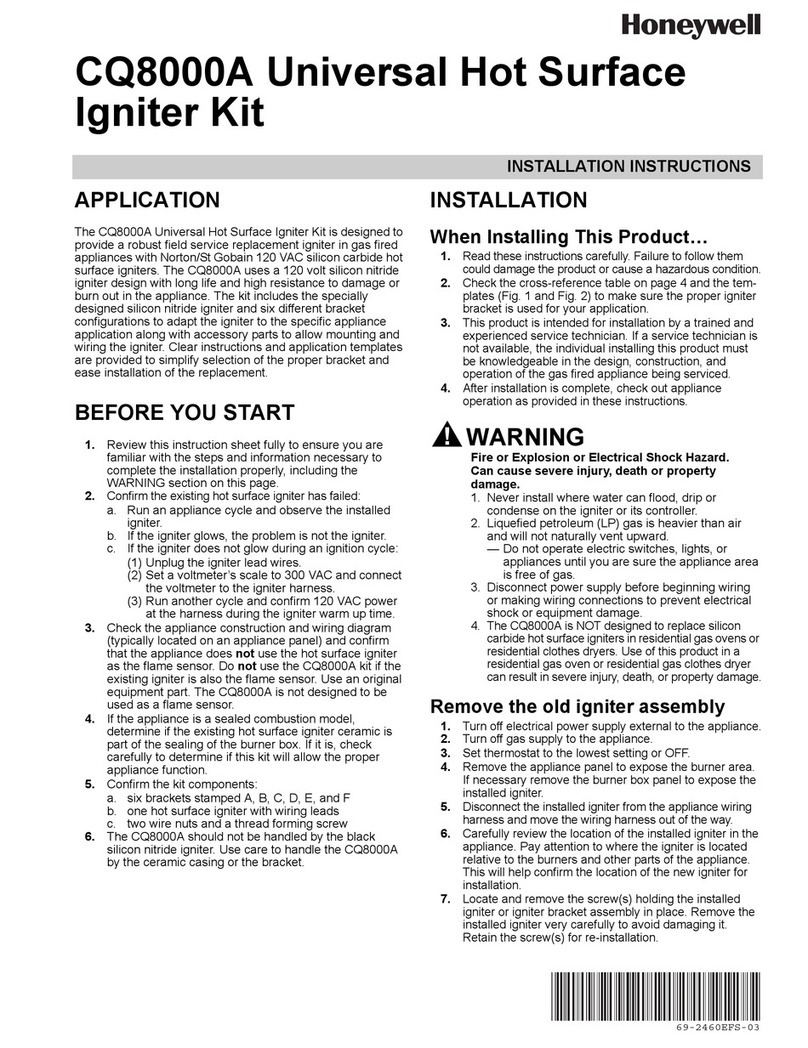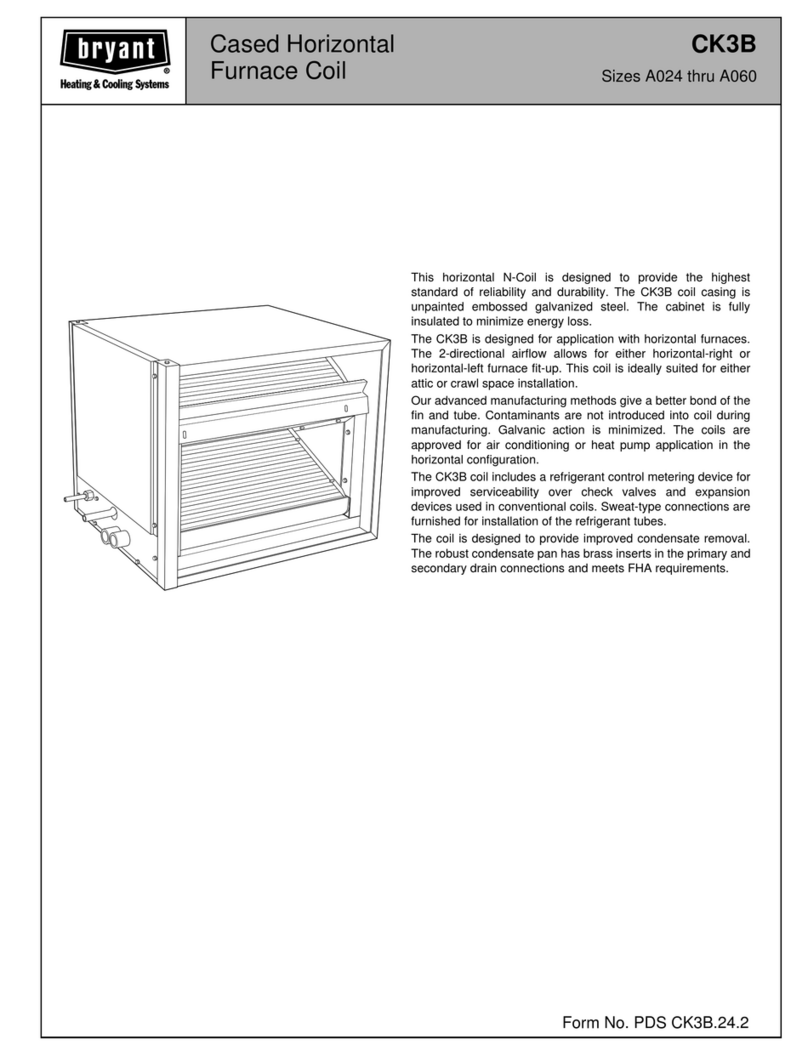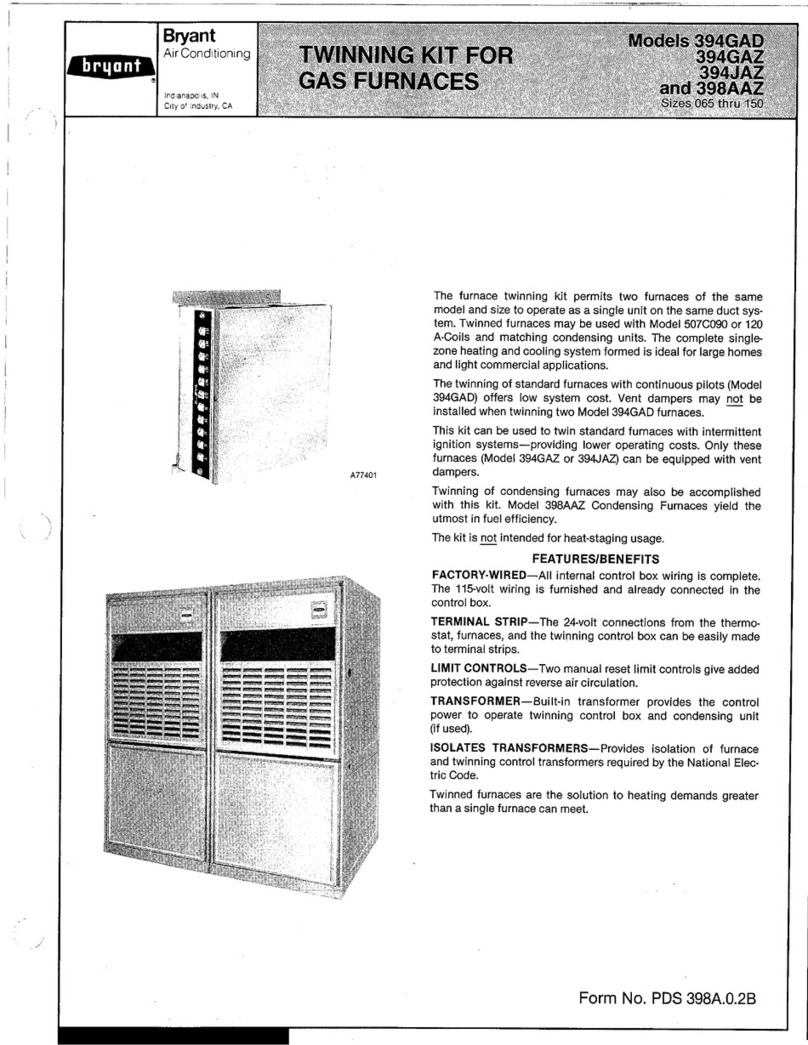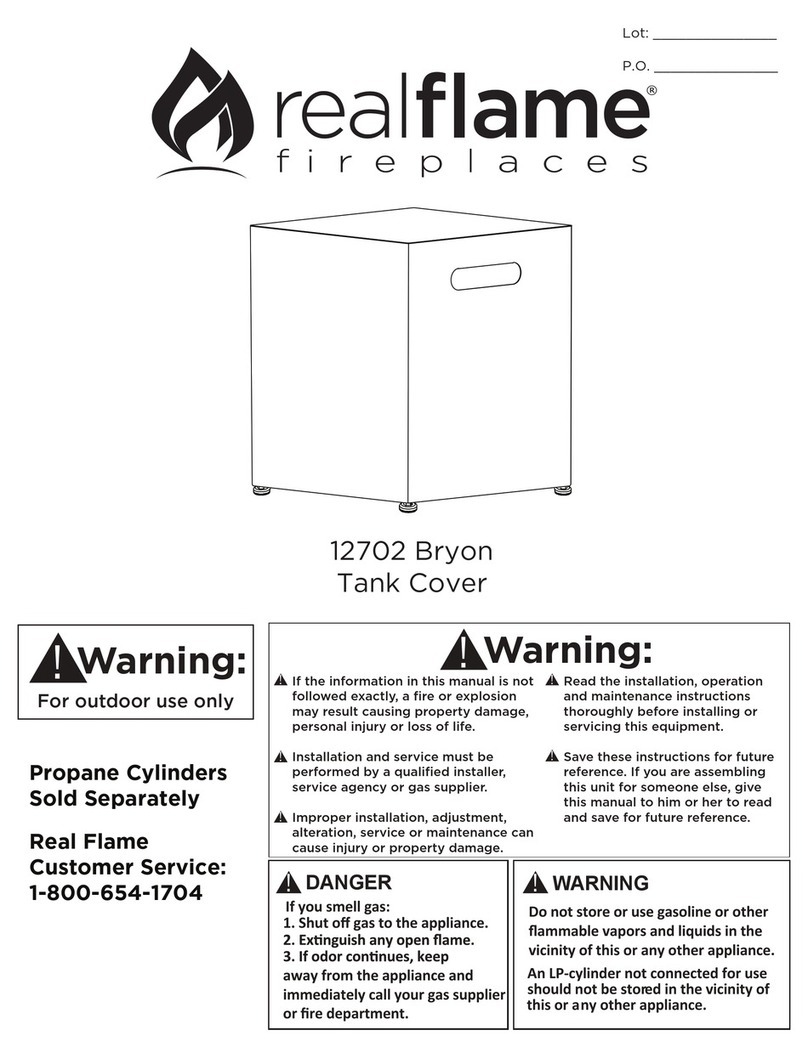
1
KGBPN42011SP
Installation Instructions
Gas Conversion Kit Propane-to-Natural for
1 Stage Condensing (90%+) and
Non-Condensing Gas Furnaces
40,000 BTUH to 140,000 BTUH Only
CERTIFIED
Read the entire instruction manual before starting the installation.
SAFETY CONSIDERATION
!WARNING
FIRE, EXPLOSION, ELECTRICAL SHOCK, AND CARBON
MONOXIDE POISONING HAZARD
Failure to follow this warning could result in personal injury or
death.
This conversion kit shall be installed by a qualified service
agency in accordance with the manufacturer’s instructions and
all applicable codes and requirements of the authority having
jurisdiction. If the information in these instructions is not
followed exactly, a fire, explosion, or production of carbon
monoxide could result causing property damage, personal
injury, or loss of life. The qualified service agency is responsible
for the proper installation of this furnace with this kit. The
installation is not proper and complete until the operation of the
converted appliance is checked as specified in the
manufacturer’s instructions supplied with the kit.
!AVERTISSEMENT
LE FEU, L’EXPLOSION, CHOC ELECTRIQUE,
ET MONOXYDE DE CARBONE EMPOISONNER
Cette trousse de conversion doit être installée par un servie
d’entretien qualifié, selon les instructions du fabricant et selon
toutes les exigences et tous les codes pertinents de l’autorité
compétente. Assurezvous de bien suivre les instructions dans
cette notice pour réduire au minimum le risque d’incendie,
d’explosion ou la production de monoxyde de carbone pouvant
causer des dommages matériels, de blessure ou la mort. Le
service d’entretien qualifié est responsable de l’installation de
cette trousse. L’installation n’est pas adéquate ni complète tant
que le bon fonctionnement de l’appereil converti n’a pas été
vérfié selon les instructions du fabricant fornies avec la trousse.
Installing and servicing heating equipment can be hazardous due
to gas and electrical components. Only trained and qualified
personnel should install, repair, or service heating equipment.
Untrained personnel can perform basic maintenance functions
such as cleaning and replacing air filters. Trained service
personnel must perform all other operations. When working on
heating equipment, observe precautions in the literature, on tags,
and on labels attached to or shipped with the unit, and other
safety precautions that may apply.
Follow all safety codes. In the United States, follow all safety
codes including the current edition of the National Fuel Gas Code
(NFGC) NFPA No. 54/ANSI Z223.1. In Canada, refer to the
current edition of the National Standard of Canada, Natural Gas
and Propane Installation Codes (NSCNGPIC), CAN/CSA−B149.1
and .2. Wear safety glasses and work gloves. Have a fire
extinguisher available during start−up, adjustment steps, and
service calls.
Recognize safety information. This is the safety−alert symbol .
When you see this symbol on the furnace and in instructions or
manuals, be alert to the potential for personal injury. Understand
the signal words DANGER, WARNING, CAUTION and NOTE.
The words DANGER, WARNING, and CAUTION are used with
the safety alert symbol. DANGER identifies the most serious
hazards which will result in severe personal injury or death.
WARNING signifies a hazard which could result in personal
injury or death. CAUTION is used to identify unsafe practices
which may result in minor personal injury or product and property
damage. NOTE is used to highlight suggestions which will result
in enhanced installation, reliability, or operation.
INTRODUCTION
!WARNING
FIRE, EXPLOSION, ELECTRICAL SHOCK AND CARBON
MONOXIDE POISONING HAZARD
Failure to follow instructions could result in personal injury,
death or property damage.
Improper installation, adjustment, alteration, service,
maintenance, or use can cause carbon monoxide poisoning,
explosion, fire, electrical shock, or other conditions, which
could result in personal injury or death. Consult your distributor
or branch for information or assistance. The qualified installer
or agency must use only factory−authorized kits or accessories
when servicing this product.
!WARNING
FIRE, EXPLOSION, ELECTRICAL SHOCK
HAZARD
Failure to follow this warning could result in personal injury,
death or property damage.
Gas supply MUST be shut off before disconnecting electrical
power and proceeding with conversion.
